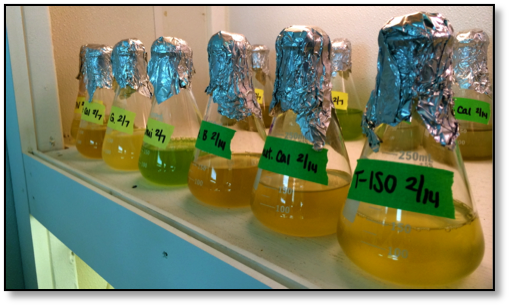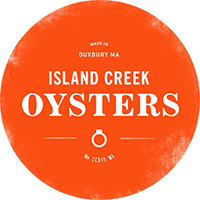Hi, I’m not sure we’ve met yet! My name is Hannah Pearson and I am Island Creek’s new hatchery manager! We’ve got a lot going on in our hatchery this season that we’d like to share with you and I’ll keep you updated here! There is a lot that happens behind the scenes of a hatchery and I will take you through the processes and the “science behind it all” while also keeping you informed of the progress of our babies! So, what IS a hatchery you may ask? A hatchery is a facility where eggs are hatched under artificial conditions, including those of fish, shellfish, or poultry. Just like famers raise chickens, turkeys, or ducks, we raise oysters in our facility so that eventually we can plant them in Duxbury Bay, let them grow, and 2 years later they’ll end up on your plate! Out in the wild, male and female oysters release eggs and sperm into the water (a process I will refer to as “spawning”) in order to reproduce…so all we do is allow them to do this within our lab and we retain all the eggs and raise them in our large tanks. Its like an incubator for baby chicks—gotta give them a head start on life.
Shellfish are filter feeders, which means they use their gills to filter out any nutrients or algae in the water to feed. So in our hatchery, we produce a lot of algae to feed our adults and babies. Yes, we raise shellfish but we raise algae too, which is just as important! If you stick around for the journey I’ll be explaining everything we do in order to run this hatchery!
You may think that we’re growing oysters here, but this year the hatchery got an early start this season, just in time to host a new shellfish species: the Atlantic Surf Clam! Maybe you’re familiar with these guys as they’re the ones you see dug down in the sand…or the big clamshells you find on the beach. You can find surf clams, also known as “Spisula” anywhere on the east coast from Nova Scotia down to South Carolina, so you can imagine it’s a popular clam to eat! We had our very first Spisula spawn at the end of January, which didn’t come as much of a surprise as, unlike most other shellfish, Spisula spawn naturally in colder waters. Spisula eggs are very ripe around this time of year, so within a hatchery setting, any slight change in seawater temperature can really “set the mood” for the clams and that’s how we ended up with 11 million Spisula eggs! Luckily we were prepared for babies as we’ve been growing 6 different kinds of algae that include both baby food and adult food. It’s important to have a variety of algae available, as baby shellfish cannot consume adult food because it is simply too big a cell size to digest. Adults can consume all algae species and should be fed multiple kinds in order to beef up their gonads so we can get mature eggs and sperm.
In the hatchery, we always have “broodstock” which are adult shellfish that we bring in from Duxbury Bay. Because we bring in shellfish from cold water, the gonads are not ripe so we have to “condition” them by feeding them lots of algae. After a few weeks of heavy feeding, the eggs and sperm within the oysters or clams will be ripe and ready to go! Our broodstock for the first few weeks of the season included oysters, Spisula, and clams!
Very soon after the Spisula, we had a clam spawn and it didn’t take many ripe females to achieve a total of 34 million eggs! The microscopic larvae require a lot of attention, as they need clean, warm, and aerated water, and lots of food, so we are busy keeping our larvae happy and healthy. This week was an exciting one in the hatchery as the Spisula have entered metamorphosis! Young larvae, called “veligers”, have a part of their body that they can stick out of their shell and use to swim around the tank. They use “cilia” which are tiny hairs that they can move around.
A couple weeks later, when they are ready to move on to the adult form, they enter metamorphosis where they grow a foot and crawl around the bottom and sides of the tank. Eventually the larvae lose their swimming ability, so they “set” using their foot. Like large adult clams, these post-set juveniles can use their foot to become mobile.
We are planning our first oyster spawn for next week. We’ve been conditioning some nice-looking Island Creeks for over a month with rich and plentiful algae so that we can get the best-looking babies possible! Stay tuned to find out the science behind spawning!
★ Hannah Pearson runs our hatchery. She is from a small island on the East Coast of North America known as Rhode Island. She’s a big Big Buddy Cianci fan. ★



